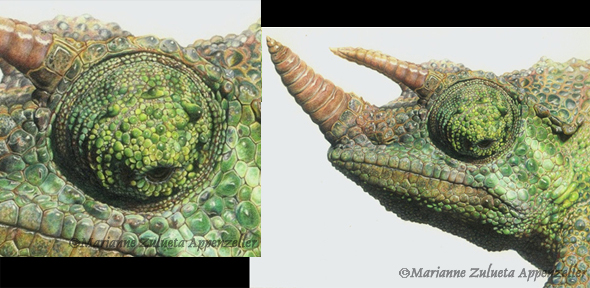The coloured pencil – The technique
This technique involves “mixing” dry pigments. Unlike with the oil painting technique , where liquid pigments previously mixed in a palette are used, with this technique, a colour is obtained from the superimposition of several layers of different colours on a surface with the resulting transparencies.
The white does not exist. For this reason, with this technique and with the watercolour technique as well, it is necessary to plan which areas will be reserved to use the white (shines) of the surface or paper we are painting.

The surface or paper we are painting only admits a certain quantity of pigment. If we exceed this quantity, the drawing will be saturated, muted and vague and the fibre paper will start to detach itself.
The colour pencil can not be erased because there will always be left traces of the strokes and colour. The paper will become smudged and will get a pitted texture.
This technique is very slow. Unlike the liquid techniques with which great surfaces of tonality can be obtained, with this technique each colour has to be worked with several layers and one millimetre at a time.

In a miniature of 6 x 6 cm it may be necessary to use 150 different colour pencils.
Any drawing, even the smallest ones, needs at least 15 to 45 days of full-time work.